
Kusatsu in Gunma Prefecture is no down a popular destination for travelers because of the famous Kusatsu Hot Springs. The location is about 3.9 thousand feet above sea level (1200 meters) and surrounding the area is an active volcano (Kusatsu-Shirane), an inactive volcano (Mount Tengu) and Mount Motoshirane which are located to the west.
The area’s coldest time of the month is January and February in which the average temperature can go up to 31/32 degrees F (-0.5-0.1 C) and can go as low as 17.8-18 degrees F (-7.9 to -7.8 C). January and February is when Kusatsu receives the most snowfall.
It is said that back in the Yayoi period (300 BC-300 AD) that Yamato Takeru, son of Emperor Keito (the 12th Emperor of Japan) or Yamabushi, a Japanese mountain hermit discovered the hot springs in Kusatsu. There is no historical evidence of this but it is said that the towns of Tsumagoi and Agatsuma was named after his wife.
But if there was any historical document about the existence of Kusatsu and its hot springs, it was during the Sengoku Period, the Tokyo University Historiographical Book of Facsmiles contains information from the year 1595 (Bunroku 4), there was correspondence between Tokugawa Ieyasu and Toyotomi Hideyoshi in which Hideyoshi recommended Ieyasu to visit Kusatsu Hot Springs. While Ieyasu did not go, he had servants go there to bring back water from Kusatsu.
The area became more popular in the Edo Period as sexually active people were catching venereal diseases such as gonorrhoea and syphillis in Tokyo and the only cure was for people to bath in a hot spring. And the Kusatsu Hot Springs would eventually become popular that the 8th Shogun Tokugawa Yoshimune had servants take hot-spring water from the Yubatake Source and transport it back to his castle for him to bathe in.
I will go more into the village in my next blog post but I will say the area suffered heartbreak in 1869 when Kusatsu burned to the ground.
When you arrive to the bus terminal in Kusatsu, the building has three floors. The first floor being the restaurant and the Ippanshadan Hojin Kusatsu Hot Spring Sight Seeing Information Center.
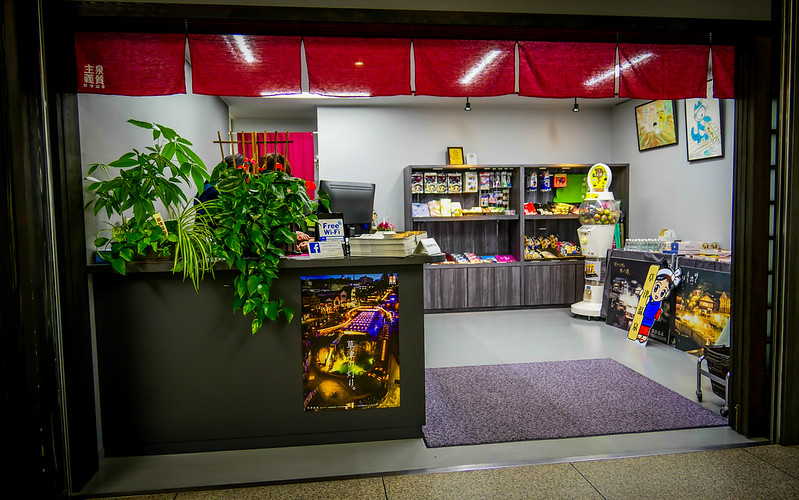
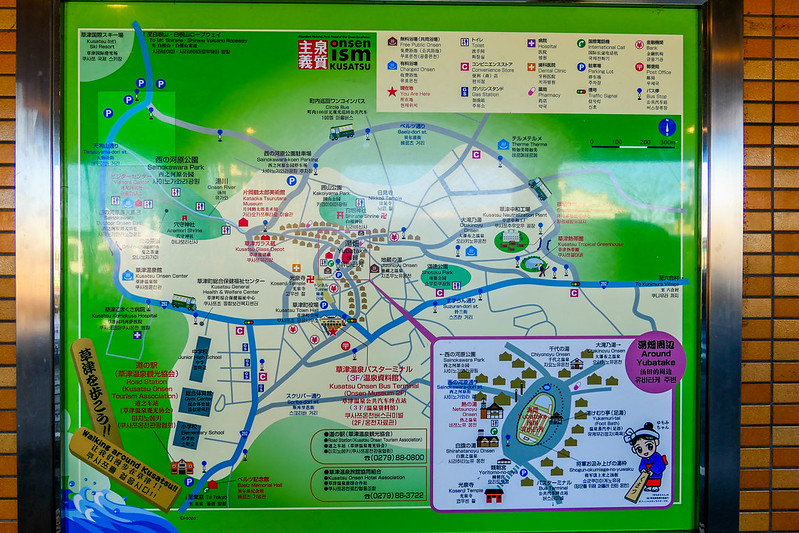
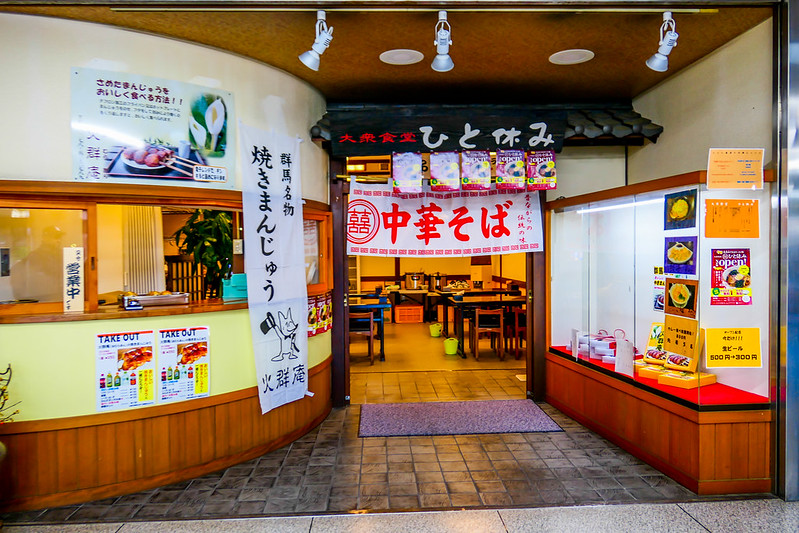
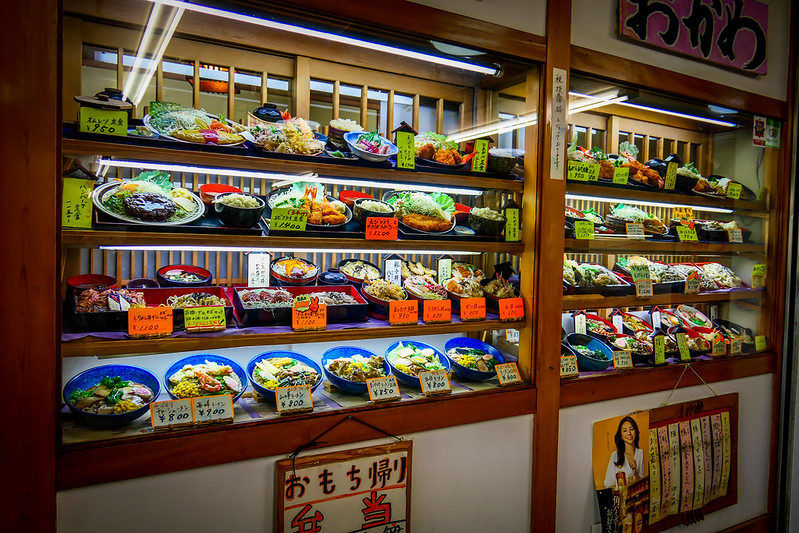
The second floor would be the bus terminal, ticket booth, coffee and souvenir shop and the third floor which is the Onsen Library.

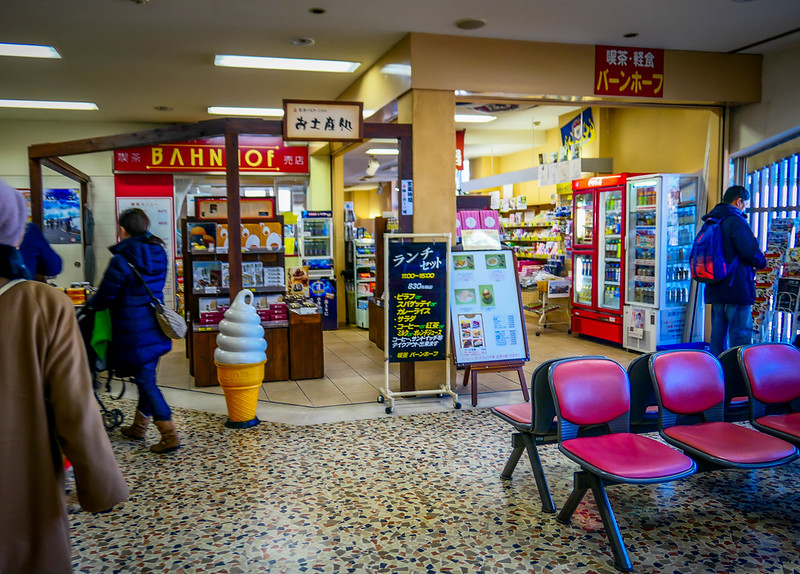
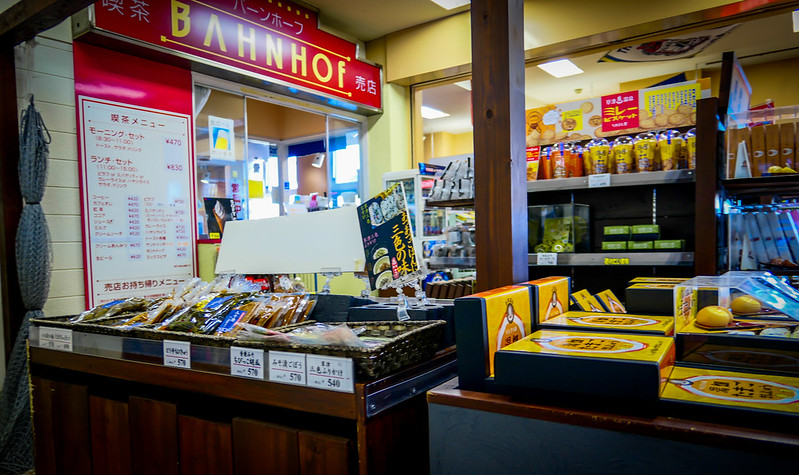
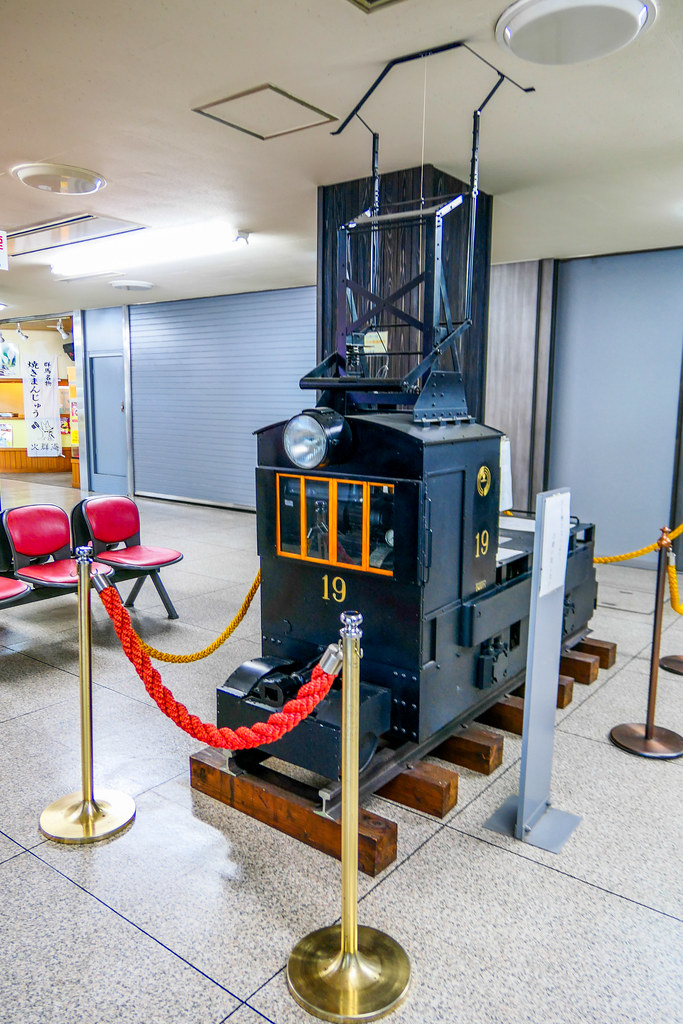

Upon leaving the bus terminal, you will see a statue structure and a hot spring, which is typically full of people who just arrived to Kusatsu and can’t wait to get their feet into the water.
When I went, Kusatsu had snow earlier in the day and the pond was frozen.
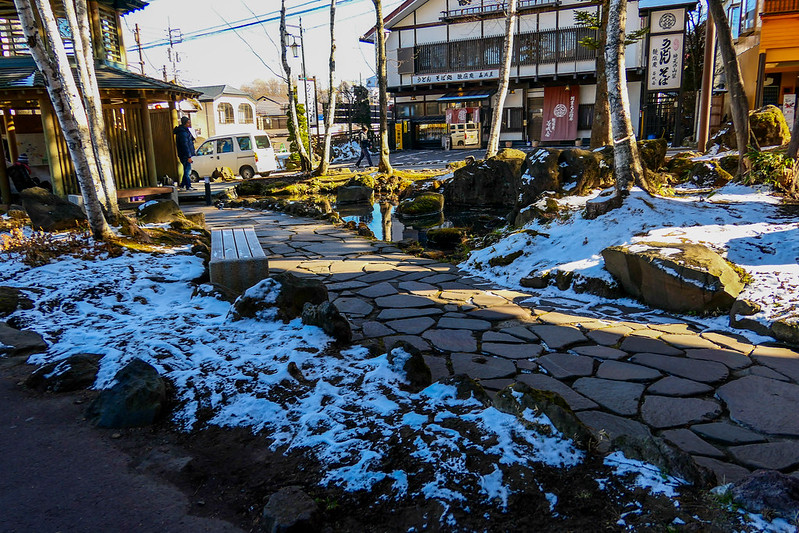
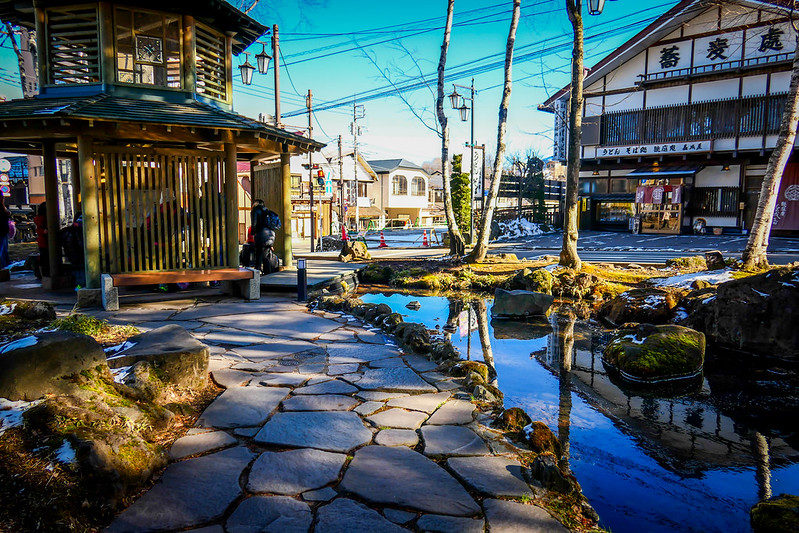


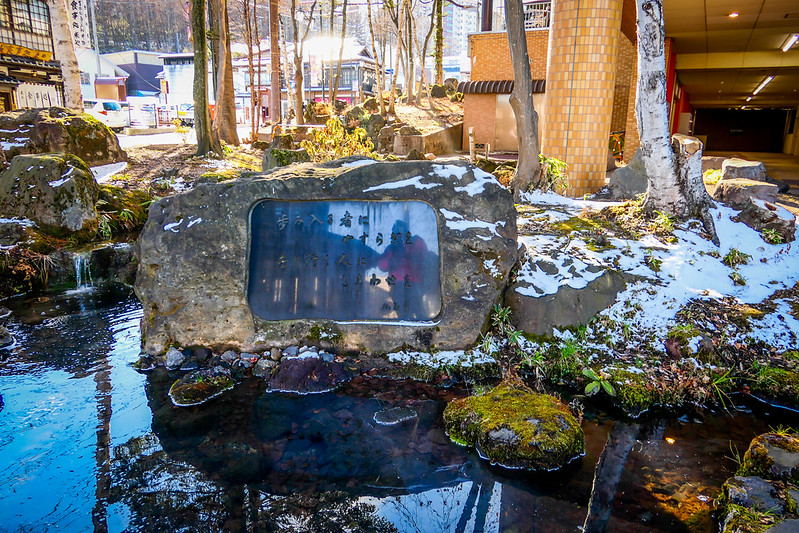


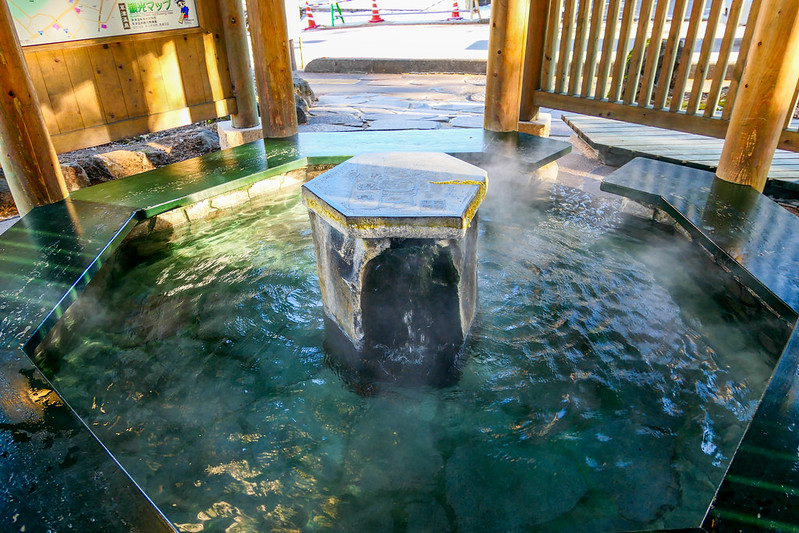
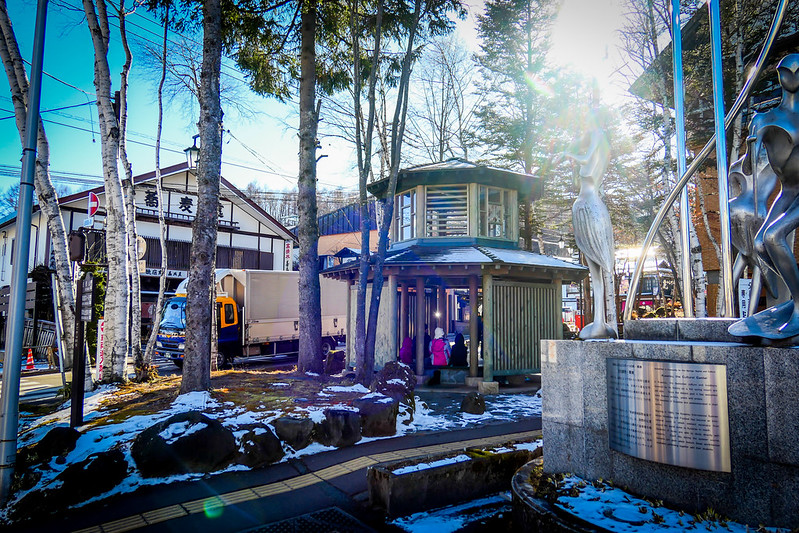


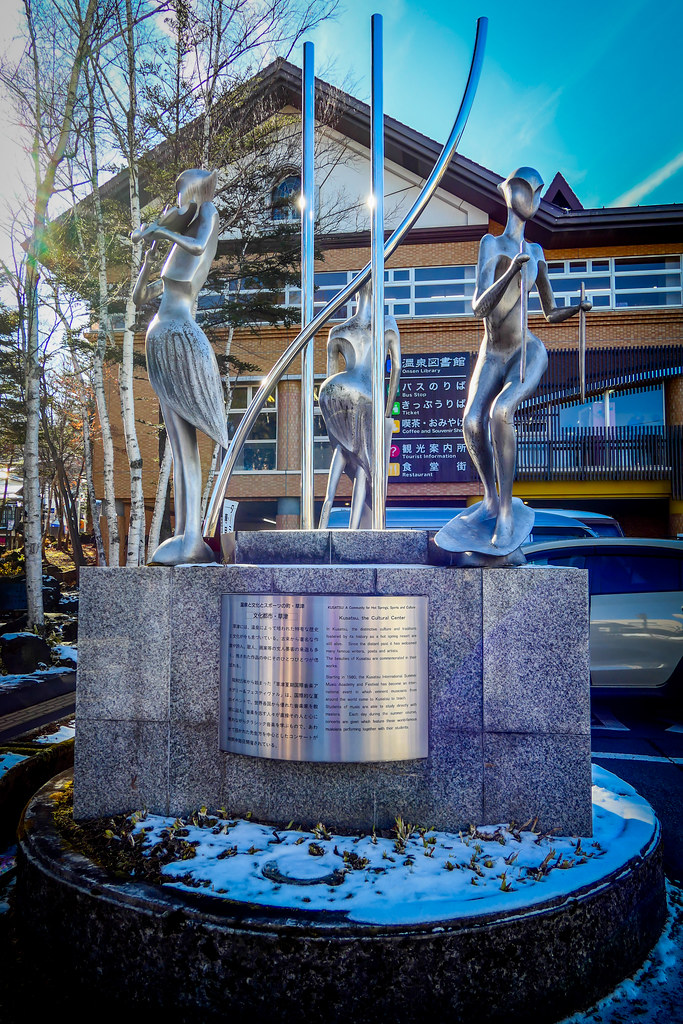
The statue in front says:
Kusatsu: A Community for Hot Springs, Sports and Culture
Kusatsu, the Cultural Center
In Kusatsu, the distinctive culture and traditions fostered by its history as a hot spring resort are still alive. Since the distant past, it has welcomed many famous writers, poets and artists.
The beauties of Kusatsu are commemorated in their works.
Starting in 1980, the Kusatsu International Summer Music Academy and Festival has become an international event in which eminent musicians from around the world come to Kusatsu to teach.
Students of music are able to study directly with masters. Each day during the summer course, concerts are given which feature these world-famous members performing together with their students.
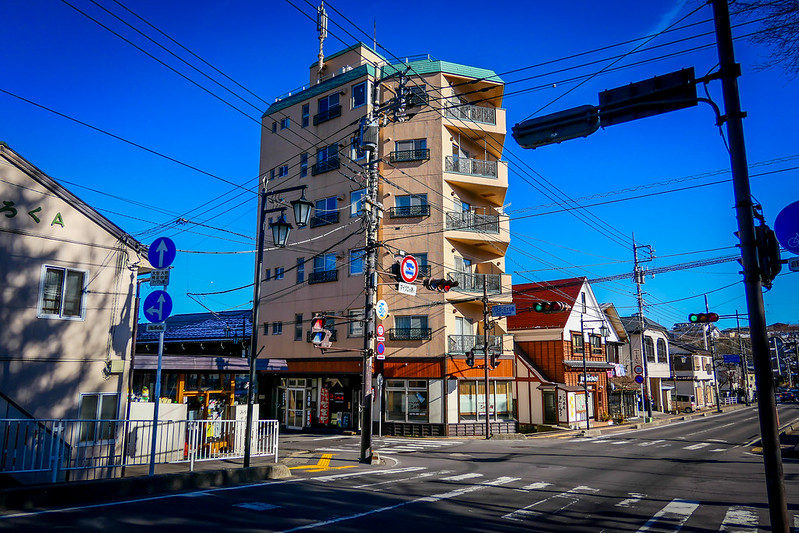
I then start to notice across the street, everyone is going straight down this path (left from where I’m standing), so I figured this will take me to the famous Kusatsu Hot Springs.
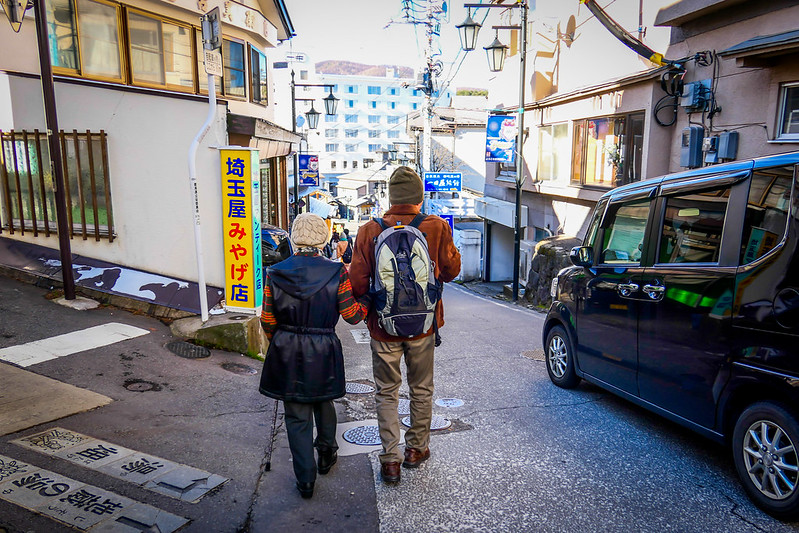
I’m not quite sure where this will take me but might as well enjoy and discover new things in Kusatsu.
